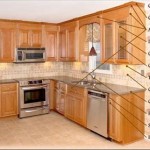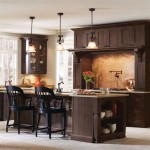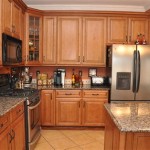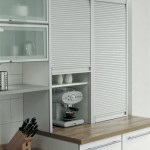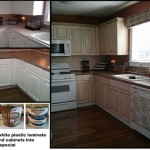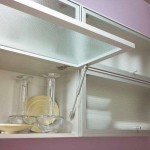DIY Antiquing Kitchen Cabinets: A Guide to Transform Your Kitchen
Antiquing kitchen cabinets is a cost-effective way to give your kitchen a timeless and elegant look. By following these essential steps, you can easily achieve the desired patina and enhance the character of your kitchen cabinetry.
Materials and Tools
Before you begin, gather the necessary materials and tools: paint stripper, sanding sponge, cleaning rags, gloves, vinegar, cheesecloth, brown glaze, topcoat, paintbrushes, and a spray bottle.
Safety Precautions
Wear gloves and ensure adequate ventilation when using paint stripper and other chemicals. Follow the manufacturer's instructions carefully to avoid accidents.
Step 1: Stripping Paint
Apply a thick layer of paint stripper to the cabinet doors and drawers using a paintbrush. Let it sit for the recommended time, then use a sanding sponge to scrape off the softened paint. Repeat the process until all of the paint is removed.
Step 2: Sanding
Sand the cabinet surfaces lightly with a sanding sponge to smooth any rough edges and create a slightly porous surface for the glaze to adhere to.
Step 3: Cleaning the Surface
Wipe down the cabinets with a cleaning rag dampened with vinegar to remove any remaining paint residue or sanding dust. Let the cabinets dry completely.
Step 4: Applying Glaze
Mix equal parts brown glaze and vinegar in a spray bottle. Spray the mixture onto the cabinets and use a cheesecloth to wipe it in, working in small sections. Focus on corners, edges, and areas where natural wear and tear would occur.
Step 5: Removing Excess Glaze
Use a clean cheesecloth to wipe off any excess glaze while it is still wet. Leave a thin, even layer on the surface to create the desired antiquing effect.
Step 6: Topcoating
Once the glaze has dried completely, apply a clear topcoat to protect the antiquing finish. Use a paintbrush and apply two thin coats, allowing each coat to dry before applying the next.
Tips for Achieving the Perfect Finish
Use different glazes to achieve varying shades of antiquing. Begin with a light glaze and gradually add more brown glaze to create darker effects.
Wipe off excess glaze with a slightly damp cloth to create a more distressed and aged look.
Allow ample drying time after each step, as rushing the process can lead to imperfections.
Antiquing kitchen cabinets is a rewarding and budget-friendly project that can truly enhance the ambiance of your kitchen. By following these steps and using your creativity, you can create a stunning and antique-looking kitchen that you will enjoy for years to come.

Rescuing And Reviving A Glazed Distressed Kitchen Bella Tucker

Distressed Kitchen Cabinets How To Distress Your

Tired Of Your White Cabinets And Love The French Country Look Watch How She Does This

Diy Barn Wood Cabinets The Honeycomb Home

Kitchen Cabinet Refacing On A Budget Farm Fresh Vintage Finds Distressed Cabinets

How To Glaze Kitchen Cabinets Diyer S Guide Bob Vila

Here Have Some More Kitchen Inspiration Repurposed Antique Cabinets Victoria Elizabeth Barnes

Pin By Dorota Kriger On Inspirations For Smallwood S Cabin Distressed Kitchen Cabinets Rustic

Rescuing And Reviving A Glazed Distressed Kitchen Bella Tucker

Distressed And Antiqued Kitchen Cabinets

